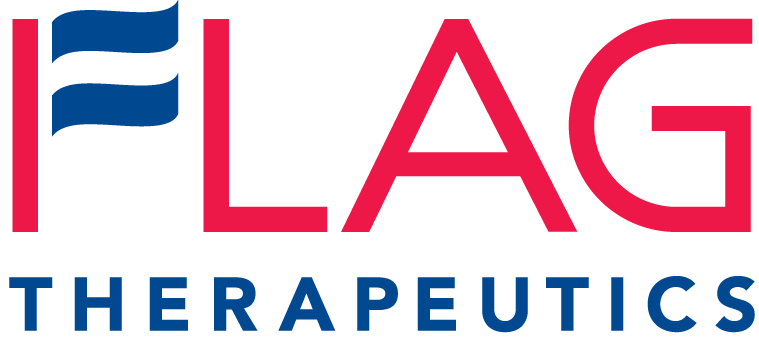FLAG-003 for DIPG/GBM
Derived from the company’s AA/TI platform technology, FLAG-003 is a multi-acting, water-soluable small molecule therapeutic designed to target, bind and kill cancer cells through two well-established mechanisms of action (MoAs): anti-angiogenesis and tubulin inhibition. By simultaneously cutting off the tumor’s vascular system and blocking tubulin signaling needed for cellular division, FLAG-003 holds to the potential to kill cancer cells while leaving normal healthy cells unharmed. Importantly, due its remarkably low molecular weight, preclinical data have demonstrated the ability of FLAG-003 to cross the blood brain barrier (BBB) as well as evade detection by the Pgp-efflux pump, two characteristics that make it a promising investigational product candidate for the treatment of gliomas, including Diffuse Intrinsic Pontine Glioma (DIPG) and Glioblastoma Multiforme (GBM).
Mechanisms of Action
Researchers have designed FLAG-003 to inhibit tumor cell angiogenesis by targeting three cell surface receptors required for a tumor to establish a vascular structure needed to support its growth: EGFR (epidermal growth factor), VEGF-R2 (vascular endothelial growth factor), and PDGFR-β (platelet-derived growth factor). By binding to these receptors, FLAG-003 inhibits the tumor cell’s ability to proliferate and thrive, thereby weakening the tumor. Simultaneously, FLAG-003 inhibits the production of tubulin, a protein needed for cellular reproduction. By disrupting tubulin production, the tumor cell cannot reproduce and dies.
Click here to view a diagram to better illustrate the MoAs of FLAG-003.
New Treatment Options Needed
Both falling under the category of glioma, a tumor type that originates in the brain, DIPG and GBM are difficult-to-treat tumors with low average life expectancy following diagnosis. While GBM typically effects older adults, DIPG primarily effects children under the age of 10, the time of life during which the brainstem’s pons are formed. Treating patients with DIPG and GBM is challenging given the highly impenetrable blood-brain barrier and the difficulty of resecting tumor tissue without damaging surrounding healthy brain tissue. These challenges may in part be responsible for the little progress made in this area of study—there have been no new drug therapies approved for the treatment of GBM since 1997, and no improvements for the treatment of children with DIPG since 1960. There is dire need for new treatment options.
100 Percent Response Rate Seen in Preclinical Studies of FLAG-003 for GBM and DIPG
Data from preclinical studies in both GBM (n=8) and DIPG (n=12) are encouraging, with each trial demonstrating a 100 percent response rate in animal models administered FLAG-003.
About Glioblastoma Multiforme
17,000 new cases in US each year, mostly older adults
No known method for preventing GBM
Highly recurrent despite treatment
~ 12-month survival (with surgery + radiation)
About Diffuse Intrinsic Pontine Glioma
A rare, fast-growing tumor, accounting for ~10% to 15%
of all brain tumors in children300 to 400 new cases of DIPG in US each year
No established standard of care
~ 5 to 8 months survival (with radiation) following diagnosis
At-a-Glance: FLAG-003
Leverages AA/T Inhibitor technology
Low molecular weight = crosses BBB and evades detection
Active in both methylated and unmethylated tumors
Orphan Drug Designation granted for gliomas
Rare Pediatric Disease Designation granted for DIPG
Q42024: File IND for FLAG-003 in DIPG
Early 2025: Initiate Phase 1/2 in DIPG

